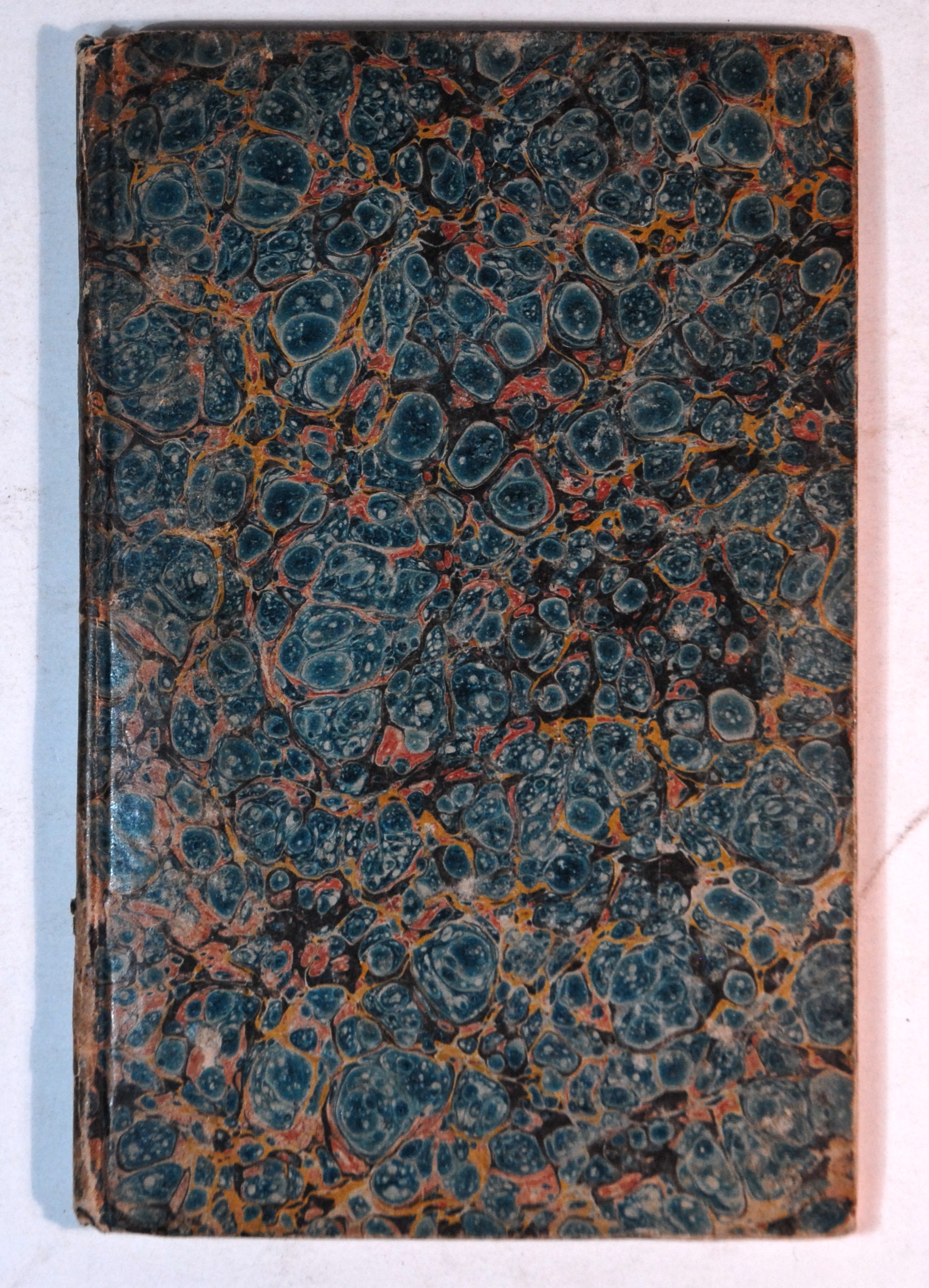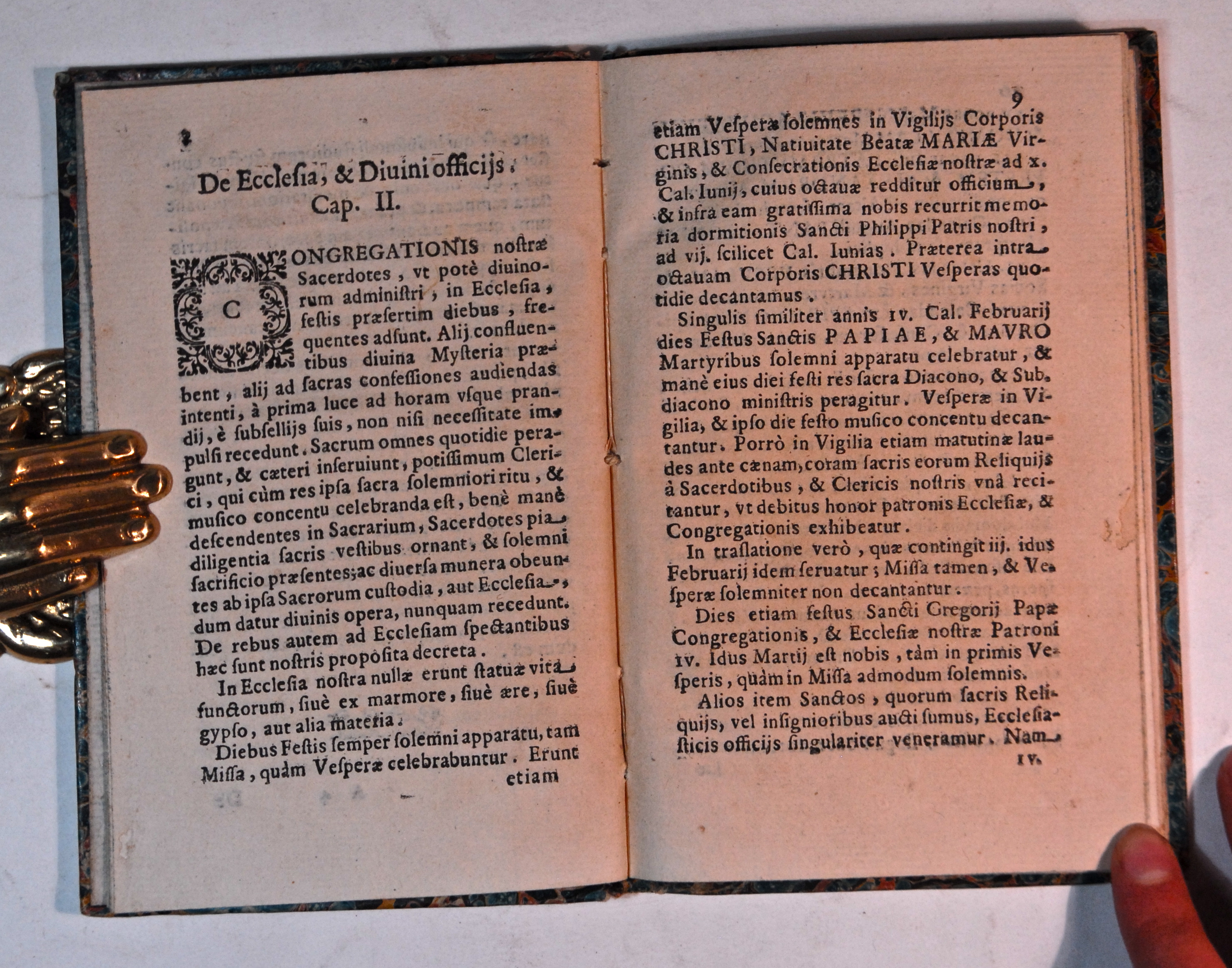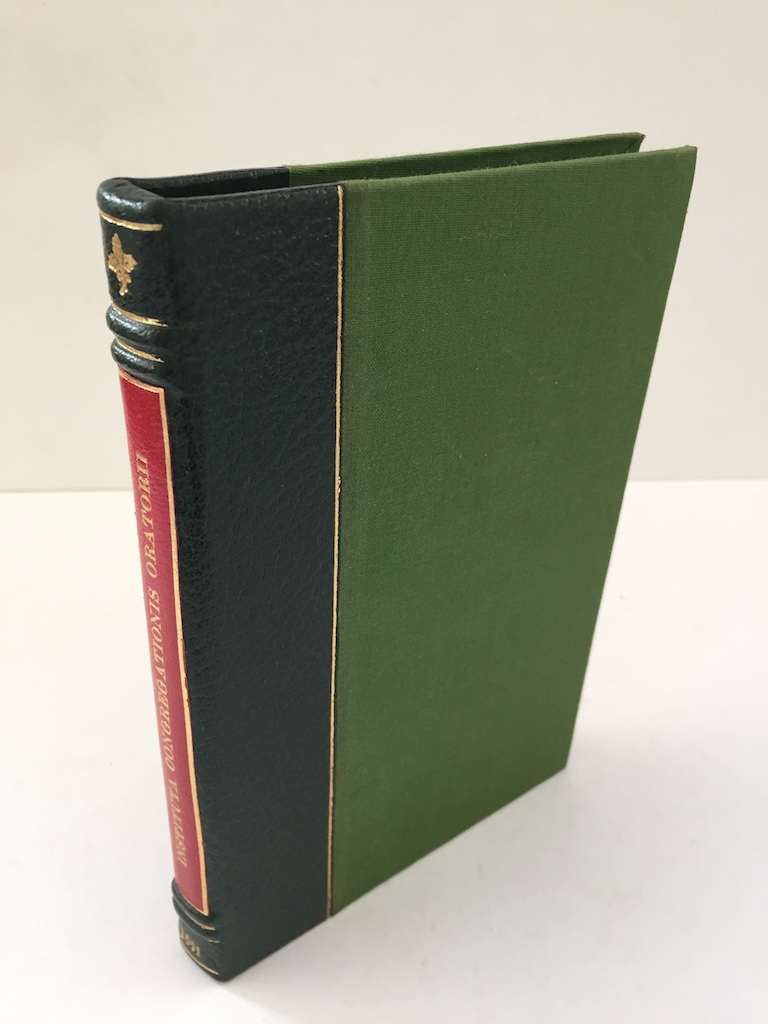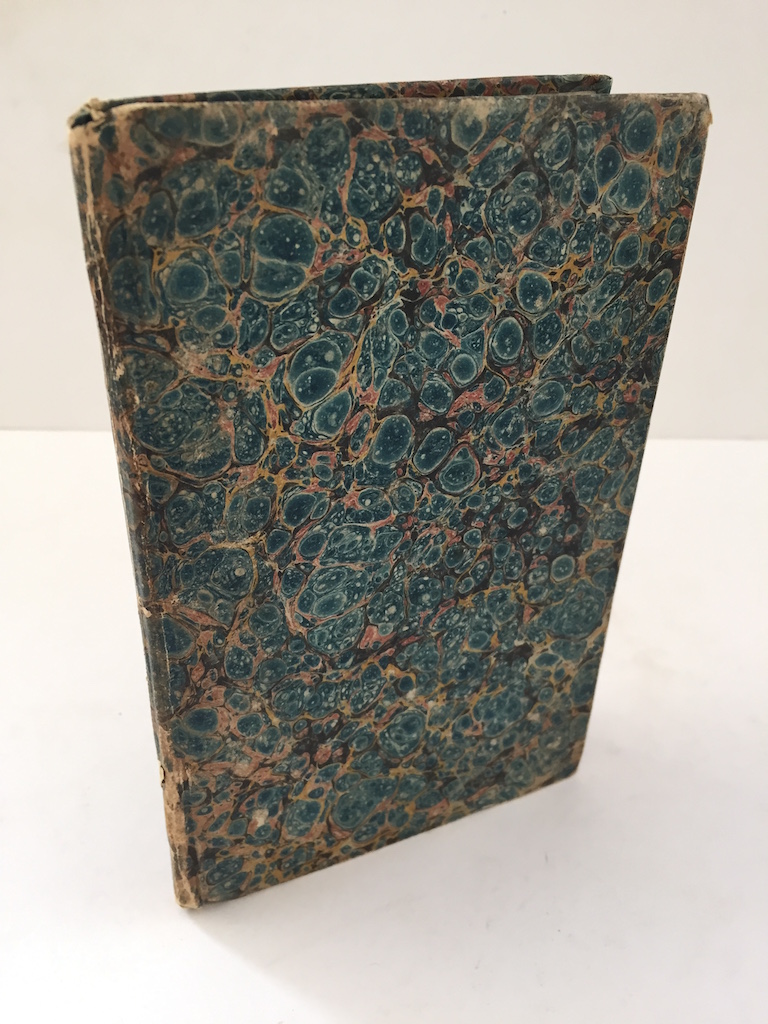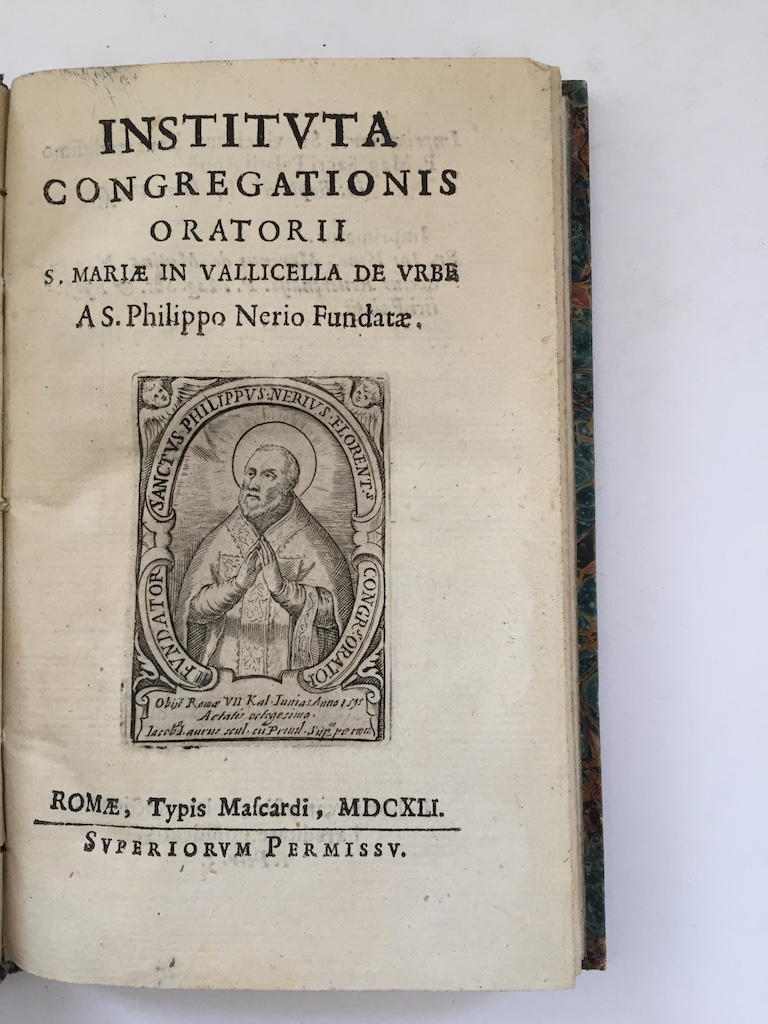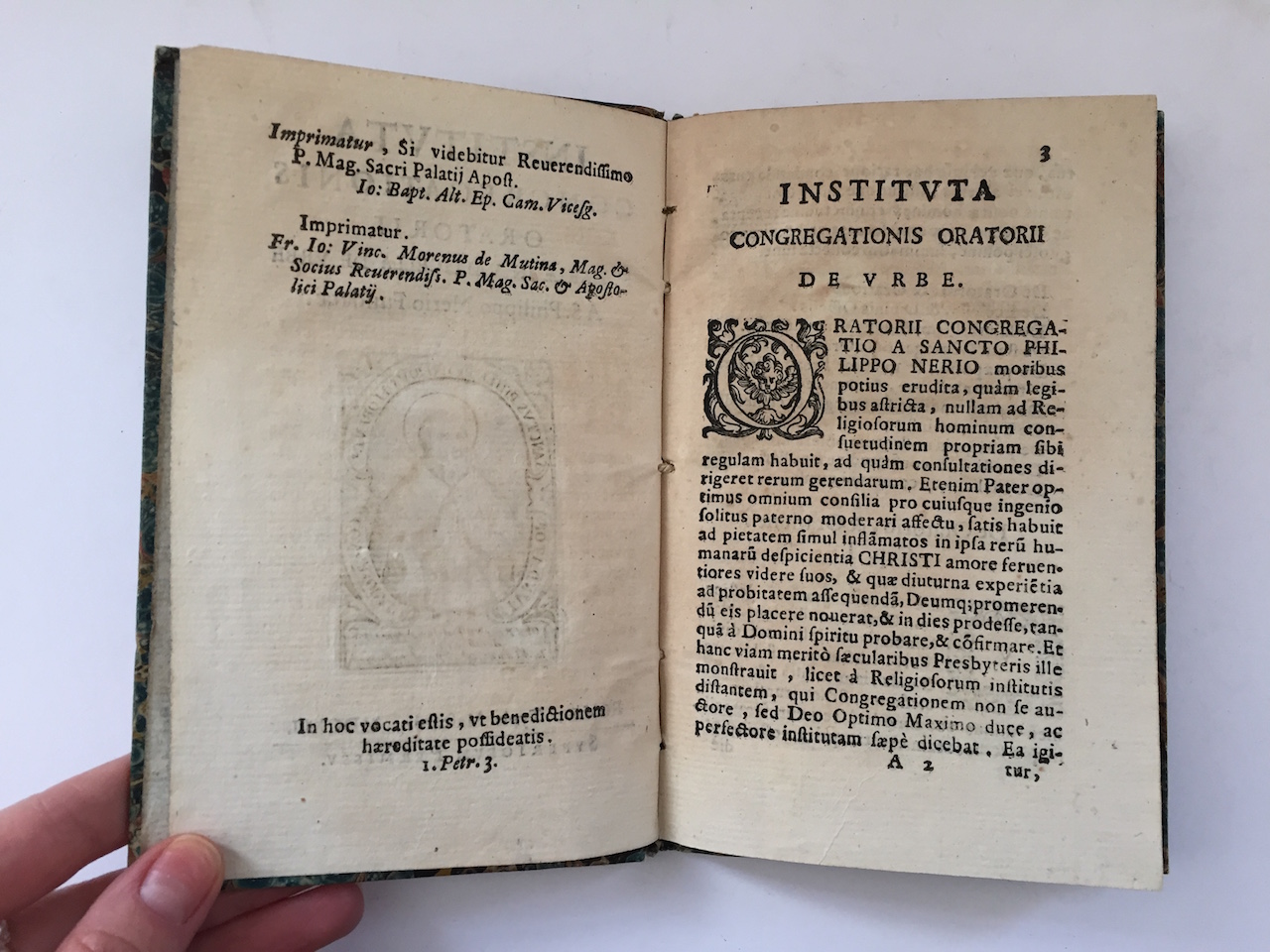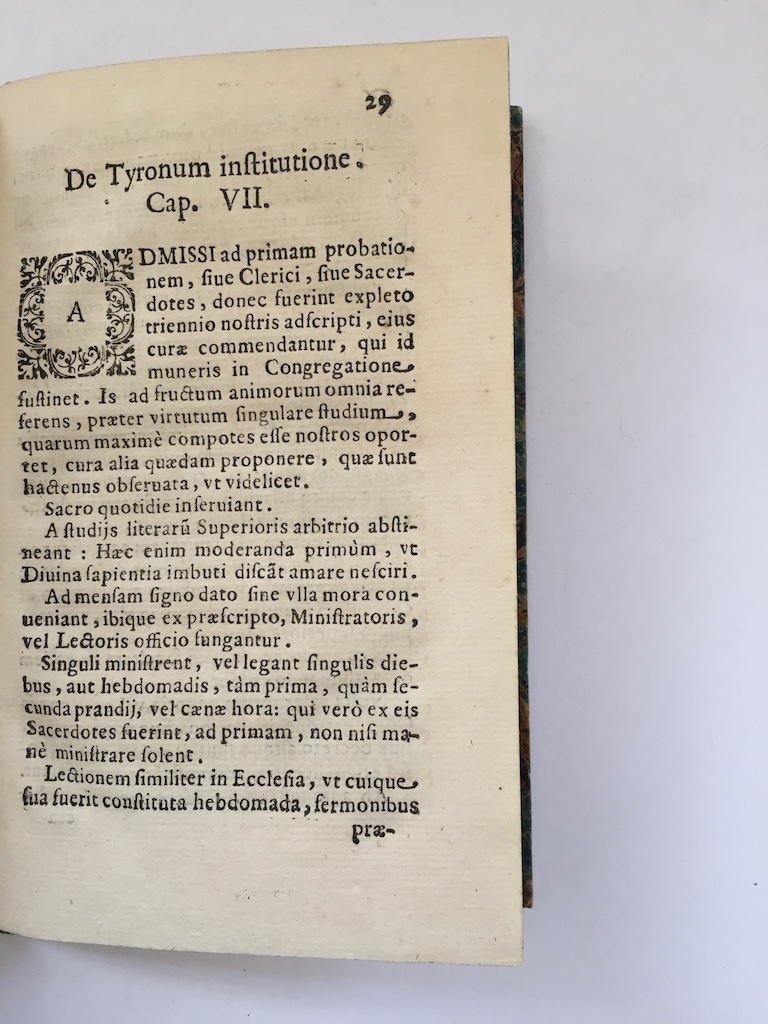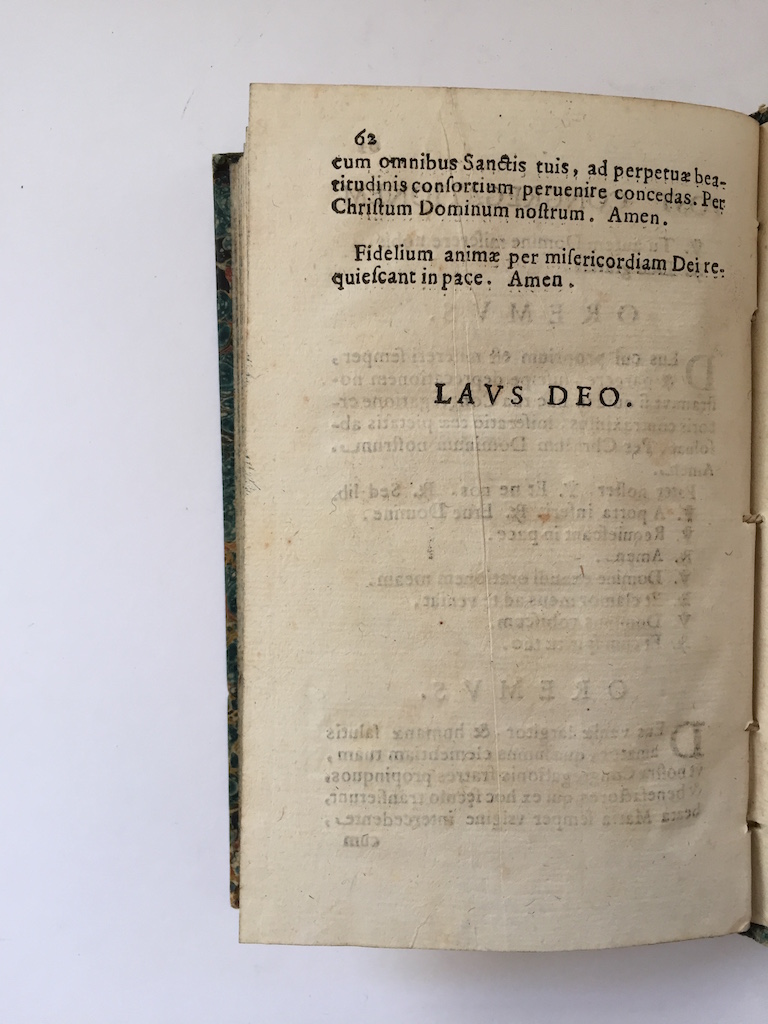NERI, St. Philip
Instituta Congregationis Oratorii S. Mariæ in Vallicella de Urbe A.S. Philippo Nerio Fundatæ.
Rome, Typis Mascardi, , 1641£2,250.00
8vo. pp. 62, [ii]. (last blank). Roman letter. Engraved portrait vignette of St Philip Neri by Giacomo Lauro on title, woodcut floriated initials and ornaments. Light age yellowing, original paper flaw at blank lower margin of A7, one quire lightly browned. A very good, clean copy in early C19th marbled paper boards, all edges blue, preserved in a green quarter morocco case.
Rare second edition of the regulations of the Congregation of the Oratory founded in Rome by St. Philip Neri at the church of S. Maria in Vallicella, 1575, an exact copy of the first edition printed in 1630. The rule, not officially constituted till 17 years after Saint Philip’s death, was approved by Pope Paul V in 1612. St Philip Neri was a holy man, charismatic by nature, who wished to return to the spirit of the early church and to concentrate his life on developing a community which prayed together, preached the gospel, and looked after the sick and needy. He found himself surrounded by a group of disciples who wished to live with him in community. He felt that vows might hold men against their wishes, and he wanted his community to be united only by love. Certain rules were made, simply for the efficient day to day running of the house and to help his fellow priests and lay brothers to live in charity. He was a practical man and realised that men who live together also need a degree of privacy. An Oratorian’s room or “nest”, as St Philip called it, was the centre of his temporal and spiritual life.
“The rules or the Constitutions of the Oratory are – still today- something of a curiosity in the Church, so much so that the Roman Curia has found it difficult to put the Oratory of St. Philip Neri into any of its usual categories. The Oratorians are undoubtedly secular priests, in that they have no vows, yet formerly they came under the direction of the Congregation for Religious, like the religious orders… When we study how the Constitutions developed, we can detect once again the character of Philip and his early and later disciples. The Rule was, so to speak, written from life. The life of the community – its usages and traditions – this is what is important. The first draft of the Constitutions already said so explicitly: ‘The Congregation of the Oratory is guided more by customs than bound with laws’. Nevertheless one notes that whenever an essential point of the Rule – autonomy or freedom from vows – were threatened, interest in the rule revived and the special characteristics of the Oratory were defended. .. The formulation of the Rule turned out to be far from simple. After all, the Congregation was a totally new kind of community in the Church. .. In the end the task was not completed until 1612.”. Paul Türks, ‘Philip Neri: The Fire Of Joy’. Uncommon outside Italian libraries.
The first Oratory in England was founded at Birmingham by Cardinal Newman in 1848. There are now Oratories throughout Europe and in North and South America and Africa, with the Congregation very well respected in the English speaking world. They have a very strong liturgical and musical tradition -indeed the ‘oratorio’ originated with them.
Not in BM STC It. C17th.In stock


